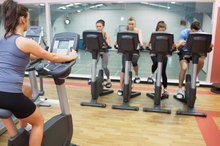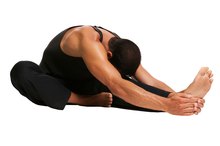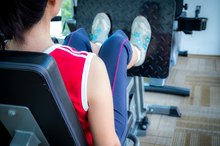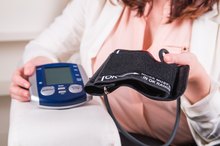Chest Pressure During Pregnancy
According to Anne Frye, author of "Holistic Midwifery", there are a wide variety of causes of pain or pressure in the chest during pregnancy. Changes in the body, and an increasing size of a growing baby create symptoms of pain and pressure in the chest. Although most chest pressure in pregnancy is benign, it is imperative to never take this for granted and always speak with your doctor if you are having persistent chest pressure, as it could be a sign of a more critical health concern.
Considerations
In Maternal and Newborn Nursing and Women's Health Care, it states that there are many changes which occur your body when pregnant which can cause one of the most common complaints of pregnancy, chest pressure. Some of the changes which occur include an increase in breast size, an increase in the amount of circulating hormones causing a relaxation of the cardiac sphincter in your stomach, a phenomenal increase in the size of your uterus, and a widening of your rib cage.
Significance
What Are the Causes of an Enlarged Uterus?
Learn More
These changes in your body, stated by Merck Manual, create conditions which cause symptoms of pressure in the chest including heartburn and indigestion, pressure in your chest cavity from an increasing uterus pressing on your diaphragm, tightness or pressure from your ribs widening, and as your breasts increase in size, they may pull against your chest muscles causing both pain and pressure in your chest and back. While these are considered normal changes in pregnancy, if you are experiencing any of these symptoms, it is important to consult your doctor about them.
Warnings
Anne Frye states that while most chest tightness is considered normal and of little concern to the mother to be, there are many cases where chest pressure should be taken care of immediately, as it can be the result of serious problems. Serious symptoms of chest pressure can come from asthma, heart attack, a blood clot in your lungs, a collapsed lung, or even an infection in your lungs or heart. Contact your doctor immediately if any of these symptoms persist.
Treatment
Chest Pressure and Swallowing Air While Eating
Learn More
Although it is necessary to consult with your doctor when you are experiencing symptoms of chest pressure, there are ways to minimize this discomfort when the pressure is related to non-emergent conditions. Changing positions often will decrease the soreness under the rib cage from the uterus pressing on the diaphragm. Indigestion can be minimized by eating small frequent meals. Stop heartburn by avoiding spicy foods, walking after meals, and not eating large meals before bed.
- Although it is necessary to consult with your doctor when you are experiencing symptoms of chest pressure, there are ways to minimize this discomfort when the pressure is related to non-emergent conditions.
Related Articles
References
- Pregnancy Corner;Chest Pain During Pregnancy
- "Maternal-Newborn Nursing and Women's Health Care";Olds et al; 2004
- "Holistic Midwifery";Anne Frye; 2008
- Fu R, Li SD, Song CX, et al. Clinical significance of diabetes on symptom and patient delay among patients with acute myocardial infarction-an analysis from China Acute Myocardial Infarction (CAMI) registry. J Geriatr Cardiol. 2019;16(5):395-400. doi:10.11909/j.issn.1671-5411.2019.05.002
- Bilora F, Ceresa M, Milan M, Sarolo L, Prandoni P. The impact of deep vein thrombosis on the risk of subsequent cardiovascular events: a 14-year follow-up study. Int Angiol. 2017;36(2):156-159. doi:10.23736/S0392-9590.16.03664-6
- Bellet RN, Lamb RL, Gould TD, Bartlett HJ. Prevalence of neuro-musculoskeletal pain and dysfunction in open-heart surgical patients preoperatively and at 6 and 12 weeks postoperatively: a prospective longitudinal observation study. Pragmat Obs Res. 2017;8:211-222. doi:10.2147/POR.S131060
- National Institutes of Health, U.S. National Library of Medicine: MedlinePlus. Chest Pain. Updated August 4, 2020.
Writer Bio
Kristi Croddy, BSN, is a registered nurse who started writing in 1994. She volunteers as a lactation consultant and pregnancy coach. Her writing career includes articles on pregnancy health, childbirth and breastfeeding. She is currently working on her first book, "Pain Free Delivery: A Guide to Natural Childbirth."









